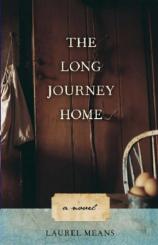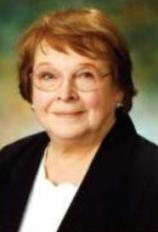Reading Group Guide
Discussion Questions
The Long Journey Home: A Novel of the Post-Civil War Plains

1. Readers have commented on the novel’s suspenseful plot. What, if any, elements of suspense did you find in the way the story unfolded?
2. Did the story end as you expected?
3. Readers have also commented on the story’s strong, accurate, and occasionally brutally realistic depiction of pioneer life. Do you agree?
4. The author’s original title for the novel was Journey by Another Name, which the publisher changed to The Long Journey Home. Which title would you consider more appropriate, the one emphasizing “names” or the one emphasizing “home”?
5. What is the significance of the chapter titles? What are their thematic links?
6. How does Henry Morton’s character change in the course of his “journey”? Was he justified in marrying Agnes? In rejecting baby Rose? What do you think are the key moments of change? If you disliked him through the first few chapters, did you change your mind as you read further? Would you go so far as to consider him “redeemed” or should Agnes leave him?
7. How does Agnes’ character change? Did she really intend to drown herself and her baby? How did she justify her marriage to Matthew Creighton? What do you consider her more important influence – Henry or Matthew? Find one or two examples which signal maturing, either through her language or actions.
8. What role does the French Canadian blacksmith, Charles Bertrand, play? What is the significance of his being a “blacksmith/farrier”? Is he Henry’s friend or foe?
9. Why is the band of crooks after Henry’s homestead? What is the first clue to their intent? What steps do they take to destroy him? How are they foiled?
10. The “rose embroidered shawl” is an important symbol, tying much of the story together. What was it, why was it significant, and how does it achieve this linkage?
11. Imagery is also important throughout the story. Select your favorite passage to read aloud to the group describing the use of “water,” or “prairie landscape,” or “food.”
12. Although this is not overtly a religious novel, the author’s subtle use of John Bunyan’s Pilgrim’s Progress and the Bible as literary subtexts offer additional narrative dimensions. Discuss how these as themes and symbols are woven into the story. For example, Henry quotes Bunyan in several moments of despair. And, although he doesn’t actually read his family Bible, he finds it useful (think "names")..
13. Family life is depicted in various ways throughout the story, sometimes positive in showing the happiness of loving families working together, at other times illustrating the tragic effects of betrayal and loss. Discuss several examples of both.
14. Many of the geographic locations in the story are real, for example, Minneapolis, St. Cloud, Alexandria, Lake Osakis, Ft. Abercrombie (all in Minnesota), Jamestown and Ft. Rice (North Dakota), and Glendive, Montana. The publisher opted not to include the map provided by the author, but is it possible to trace the routes taken by Agnes and Henry? (Clues: for “Riverbend” read Shakopee; for “River Bluffs” read Red Wing; for “Green Prairie” read Long Prairie.) Why do you think some place-names were fictionalized?
15. Pioneer life seems fascinating if not romantic to our present age --- consider the popularity of Little House on the Prairie. Did your view change after reading The Long Journey Home?
The Long Journey Home: A Novel of the Post-Civil War Plains
- Publication Date: July 1, 2008
- Paperback: 250 pages
- Publisher: Academy Chicago Publishers
- ISBN-10: 0897335694
- ISBN-13: 9780897335690







